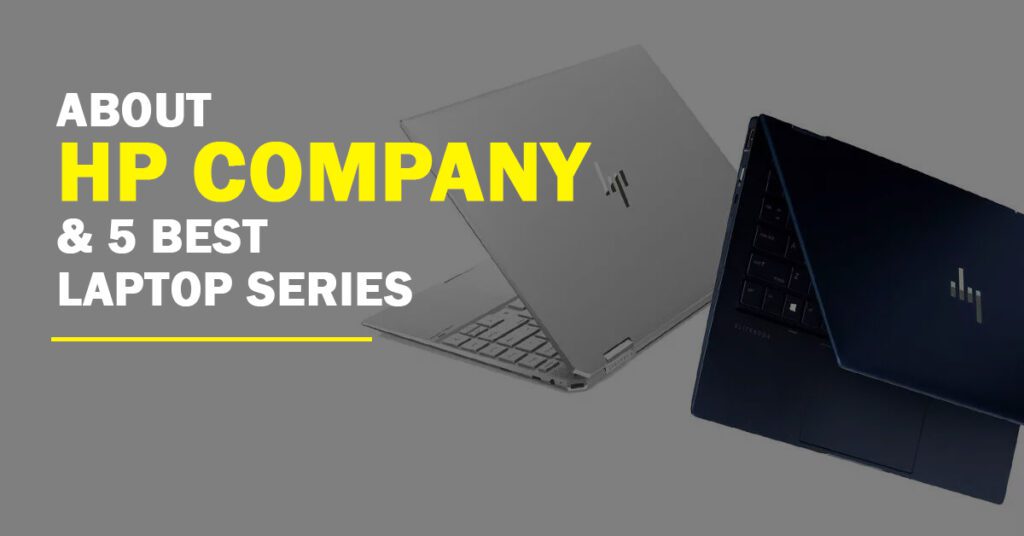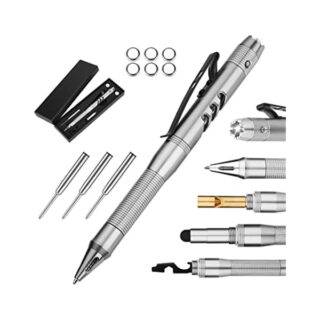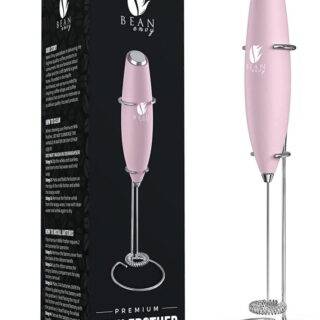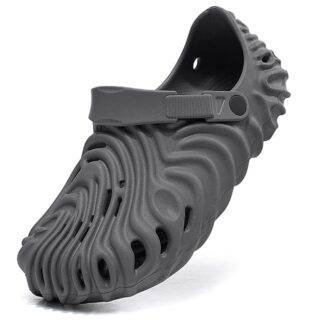
Table of Contents
ToggleAbout Hp Company
HP (Hewlett-Packard) is an American multinational technology company that develops and manufactures hardware and software products, as well as provides a range of services to consumers and businesses around the world.
The company was founded in 1939 by William Hewlett and David Packard in a garage in Palo Alto, California. Initially, HP produced electronic testing equipment, but over the years, it expanded into other areas, including computers, printers, and imaging equipment.
Today, HP is known for its laptops, desktops, printers, and other hardware devices, as well as its software and service offerings. Some of its most popular products include the HP Pavilion, HP EliteBook, and HP Spectre laptops, the HP Envy desktop, and the HP Office Jet and LaserJet printers.
In recent years, HP has also been focused on sustainability and has set ambitious goals to reduce its carbon footprint and promote environmental responsibility across its operations and supply chain.
HP is headquartered in Palo Alto, California, and has offices and facilities in numerous countries worldwide.
History Of Hp Companies
HP (Hewlett-Packard) was founded in 1939 by two Stanford University graduates, William Hewlett and David Packard, who started the company in a garage in Palo Alto, California. The company’s original focus was on producing electronic testing equipment, but it quickly expanded into other areas, including computers, printers, and imaging equipment.
In the 1960s and 1970s, HP became known for its innovative products, including the first desktop calculator, the first scientific calculator, and the HP-35, the first handheld scientific calculator. The company also developed minicomputers and mainframe computers, as well as printers and other imaging devices.
In the 1980s and 1990s, HP continued to innovate, launching its first inkjet printer in 1984 and the first LaserJet printer in 1985. The company also developed the first personal computer with a built-in CD-ROM drive in 1992 and the first color LaserJet printer in 1994.
In 2002, HP merged with Compaq, a leading computer manufacturer at the time, to form one of the largest technology companies in the world. The merger was controversial, with some shareholders and analysts questioning whether it would be beneficial for both companies.
In the years following the merger, HP focused on expanding its product lines and developing new technologies, including 3D printing and cloud computing services. The company also faced several challenges, including a major scandal involving its acquisition of the software company Autonomy and a decline in sales of its traditional hardware products.
In 2015, HP split into two separate companies, HP Inc. and Hewlett Packard Enterprise, with HP Inc. focusing on personal computers and printers, and Hewlett Packard Enterprise specializing in enterprise-level software and services.
Today, HP Inc. continues to be a leading provider of personal computing and printing solutions, with a focus on innovation and sustainability. The company is headquartered in Palo Alto, California, and has operations and facilities in numerous countries around the world.
Founders Of Hp Companies
The founders of HP (Hewlett-Packard) were William Hewlett and David Packard. Both were electrical engineering graduates from Stanford University and they started the company in 1939 in a garage in Palo Alto, California.
William Hewlett was born on May 20, 1913, in Ann Arbor, Michigan. He received his Bachelor’s degree in electrical engineering from Stanford University in 1934 and his Master’s degree in electrical engineering from the Massachusetts Institute of Technology (MIT) in 1936. Hewlett served in the US Army during World War II and was awarded the Medal of Merit for his contributions to the war effort. He passed away in 2001 at the age of 87.
David Packard was born on September 7, 1912, in Pueblo, Colorado. He received his Bachelor’s degree in electrical engineering from Stanford University in 1934 and his Master’s degree in electrical engineering from Stanford University in 1939. Packard served in the US Army during World War II and was awarded the Medal of Freedom for his contributions to the war effort. He passed away in 1996 at the age of 83.
Together, Hewlett and Packard built HP into one of the most successful and innovative technology companies in the world, with a focus on developing high-quality products and fostering a culture of innovation and creativity.
History Of HP And Its Evolution Over Time.
HP (Hewlett-Packard) has a rich history of innovation and technological advancements, dating back to its founding in 1939 by William Hewlett and David Packard in a garage in Palo Alto, California. The company’s original focus was on producing electronic testing equipment, but it quickly expanded into other areas, including computers, printers, and imaging equipment.
In the 1960s and 1970s, HP became known for its innovative products, including the first desktop calculator, the first scientific calculator, and the HP-35, the first handheld scientific calculator. The company also developed minicomputers and mainframe computers, as well as printers and other imaging devices.
In the 1980s and 1990s, HP continued to innovate, launching its first inkjet printer in 1984 and the first LaserJet printer in 1985. The company also developed the first personal computer with a built-in CD-ROM drive in 1992 and the first color LaserJet printer in 1994.
In 2002, HP merged with Compaq, a leading computer manufacturer at the time, to form one of the largest technology companies in the world. The merger was controversial, with some shareholders and analysts questioning whether it would be beneficial for both companies.
In the years following the merger, HP focused on expanding its product lines and developing new technologies, including 3D printing and cloud computing services. The company also faced several challenges, including a major scandal involving its acquisition of the software company Autonomy and a decline in sales of its traditional hardware products.
In 2015, HP split into two separate companies, HP Inc. and Hewlett Packard Enterprise, with HP Inc. focusing on personal computers and printers, and Hewlett Packard Enterprise specializing in enterprise-level software and services.
Today, HP Inc. continues to be a leading provider of personal computing and printing solutions, with a focus on innovation and sustainability. The company is headquartered in Palo Alto, California, and has operations and facilities in numerous countries around the world. HP Inc. has expanded its product lines to include 3D printers, virtual reality devices, and gaming laptops, among other products, and is committed to reducing its carbon footprint and promoting environmental responsibility across its operations and supply chain.
HP (Hewlett-Packard) has a rich history of innovation and technological advancements, dating back to its founding in 1939 by William Hewlett and David Packard in a garage in Palo Alto, California. The company’s original focus was on producing electronic testing equipment, but it quickly expanded into other areas, including computers, printers, and imaging equipment.
In the 1960s and 1970s, HP became known for its innovative products, including the first desktop calculator, the first scientific calculator, and the HP-35, the first handheld scientific calculator. The company also developed minicomputers and mainframe computers, as well as printers and other imaging devices.
In the 1980s and 1990s, HP continued to innovate, launching its first inkjet printer in 1984 and the first LaserJet printer in 1985. The company also developed the first personal computer with a built-in CD-ROM drive in 1992 and the first color LaserJet printer in 1994.
In 2002, HP merged with Compaq, a leading computer manufacturer at the time, to form one of the largest technology companies in the world. The merger was controversial, with some shareholders and analysts questioning whether it would be beneficial for both companies.
In the years following the merger, HP focused on expanding its product lines and developing new technologies, including 3D printing and cloud computing services. The company also faced several challenges, including a major scandal involving its acquisition of the software company Autonomy and a decline in sales of its traditional hardware products.
In 2015, HP split into two separate companies, HP Inc. and Hewlett Packard Enterprise, with HP Inc. focusing on personal computers and printers, and Hewlett Packard Enterprise specializing in enterprise-level software and services.
Today, HP Inc. continues to be a leading provider of personal computing and printing solutions, with a focus on innovation and sustainability. The company is headquartered in Palo Alto, California, and has operations and facilities in numerous countries around the world. HP Inc. has expanded its product lines to include 3D printers, virtual reality devices, and gaming laptops, among other products, and is committed to reducing its carbon footprint and promoting environmental responsibility across its operations and supply chain.
HP (Hewlett-Packard) has a rich history of innovation and technological advancements, dating back to its founding in 1939 by William Hewlett and David Packard in a garage in Palo Alto, California. The company’s original focus was on producing electronic testing equipment, but it quickly expanded into other areas, including computers, printers, and imaging equipment.
In the 1960s and 1970s, HP became known for its innovative products, including the first desktop calculator, the first scientific calculator, and the HP-35, the first handheld scientific calculator. The company also developed minicomputers and mainframe computers, as well as printers and other imaging devices.
In the 1980s and 1990s, HP continued to innovate, launching its first inkjet printer in 1984 and the first LaserJet printer in 1985. The company also developed the first personal computer with a built-in CD-ROM drive in 1992 and the first color LaserJet printer in 1994.
In 2002, HP merged with Compaq, a leading computer manufacturer at the time, to form one of the largest technology companies in the world. The merger was controversial, with some shareholders and analysts questioning whether it would be beneficial for both companies.
In the years following the merger, HP focused on expanding its product lines and developing new technologies, including 3D printing and cloud computing services. The company also faced several challenges, including a major scandal involving its acquisition of the software company Autonomy and a decline in sales of its traditional hardware products.
In 2015, HP split into two separate companies, HP Inc. and Hewlett Packard Enterprise, with HP Inc. focusing on personal computers and printers, and Hewlett Packard Enterprise specializing in enterprise-level software and services.
Today, HP Inc. continues to be a leading provider of personal computing and printing solutions, with a focus on innovation and sustainability. The company is headquartered in Palo Alto, California, and has operations and facilities in numerous countries around the world. HP Inc. has expanded its product lines to include 3D printers, virtual reality devices, and gaming laptops, among other products, and is committed to reducing its carbon footprint and promoting environmental responsibility across its operations and supply chain.
Growth And Development Of Hp Company
HP (Hewlett-Packard) has experienced significant growth and development over the years, becoming one of the largest and most successful technology companies in the world. Here are some of the key moments in HP’s growth and development:
- 1939: HP is founded by William Hewlett and David Packard in a garage in Palo Alto, California.
- 1960s and 1970s: HP becomes known for its innovative products, including the first desktop calculator, the first scientific calculator, and the HP-35, the first handheld scientific calculator. The company also develops minicomputers and mainframe computers, as well as printers and other imaging devices.
- 1980s and 1990s: HP continues to innovate, launching its first inkjet printer in 1984 and the first LaserJet printer in 1985. The company also develops the first personal computer with a built-in CD-ROM drive in 1992 and the first color LaserJet printer in 1994.
- 2002: HP merges with Compaq, a leading computer manufacturer, to form one of the largest technology companies in the world.
- 2000s and 2010s: HP expands its product lines to include 3D printers, virtual reality devices, and gaming laptops, among other products. The company also focuses on developing new technologies, including cloud computing services and software solutions.
- 2015: HP splits into two separate companies, HP Inc. and Hewlett Packard Enterprise, with HP Inc. focusing on personal computers and printers, and Hewlett Packard Enterprise specializing in enterprise-level software and services.
- Today: HP Inc. continues to be a leading provider of personal computing and printing solutions, with a focus on innovation and sustainability. The company is committed to reducing its carbon footprint and promoting environmental responsibility across its operations and supply chain.
HP’s growth and development over the years have been driven by its commitment to innovation, quality, and customer satisfaction, as well as its ability to adapt to changing market conditions and technological advancements.
Current Status Of Hp Company In The Market
HP (Hewlett-Packard) continues to be a major player in the technology industry, with a strong position in the market for personal computers and printing solutions.
As of 2021, HP Inc., the company’s personal computer and printer business, reported annual revenues of over $58 billion and employed more than 55,000 people around the world. HP Inc. is the world’s second-largest personal computer vendor, with a market share of around 23%, according to IDC.
HP’s product lines include a wide range of laptops, desktops, all-in-one computers, and printers for both consumer and business customers. The company has also expanded into new areas, such as gaming laptops, 3D printing, and virtual reality devices.
In addition to its hardware offerings, HP has a growing software and services business, with a focus on cloud computing, security solutions, and managed print services. The company has also made a commitment to sustainability, with goals to reduce its carbon footprint and promote environmental responsibility across its operations and supply chain.
HP’s position in the market remains strong, with a reputation for quality products and a commitment to innovation and customer satisfaction. While the technology industry is constantly evolving, HP’s history of adapting to change and staying ahead of the curve bodes well for its continued success in the years to come.
About Hp Laptops
HP (Hewlett-Packard) is known for its high-quality laptops, which are popular among both consumer and business users. Here are some of the key features and benefits of HP laptops:
- Design and Build Quality: HP laptops are known for their sleek and stylish designs, with a focus on durability and portability. The company offers a wide range of laptop models, from lightweight ultrabooks to high-performance gaming laptops.
- Performance: HP laptops are powered by the latest Intel and AMD processors, providing fast and efficient performance for a range of tasks. The company also offers a variety of graphics options, including NVIDIA and AMD Radeon graphics, for improved gaming and video performance.
- Display: HP laptops feature high-quality displays, with options for full HD and 4K resolution, as well as touchscreens for added convenience and functionality.
- Battery Life: HP laptops are designed to provide long battery life, with many models offering up to 10 hours of use on a single charge.
- Security: HP laptops come with a range of security features, including biometric authentication, password managers, and anti-virus software, to keep your data and information safe and secure.
- Customer Support: HP offers comprehensive customer support for its laptops, including online resources, phone support, and in-person assistance at authorized service centers.
HP laptops are a popular choice for both personal and professional use, offering a balance of performance, portability, and reliability. With a wide range of models to choose from, there is an HP laptop to suit the needs and preferences of any user.
Features Of Hp Laptops
HP (Hewlett-Packard) laptops are known for their high-quality performance, design, and functionality. Here are some of the key features and specifications of HP laptops:
- Processor: HP laptops are powered by the latest Intel or AMD processors, providing fast and efficient performance for a range of tasks.
- Graphics: HP laptops come with a range of graphics options, including NVIDIA and AMD Radeon graphics, for improved gaming and video performance.
- Display: HP laptops feature high-quality displays, with options for full HD and 4K resolution, as well as touchscreens for added convenience and functionality.
- Memory and Storage: HP laptops offer a range of memory and storage options, from 4GB to 32GB of RAM and from 128GB to 1TB or more of solid-state or hard disk storage.
- Battery Life: HP laptops are designed to provide long battery life, with many models offering up to 10 hours of use on a single charge.
- Design and Build Quality: HP laptops are known for their sleek and stylish designs, with a focus on durability and portability. The company offers a wide range of laptop models, from lightweight ultrabooks to high-performance gaming laptops.
- Security: HP laptops come with a range of security features, including biometric authentication, password managers, and anti-virus software, to keep your data and information safe and secure.
- Connectivity: HP laptops feature a range of connectivity options, including USB-C, HDMI, and Ethernet ports, as well as Wi-Fi and Bluetooth connectivity.
- Customer Support: HP offers comprehensive customer support for its laptops, including online resources, phone support, and in-person assistance at authorized service centers.
Overall, HP laptops are a popular choice for both personal and professional use, offering a balance of performance, portability, and reliability. With a wide range of features and specifications to choose from, there is an HP laptop to suit the needs and preferences of any user.
Best Hp Laptops
HP (Hewlett-Packard) offers a wide range of laptops to suit the needs and preferences of different users. Here are some of the best HP laptops:
- HP Spectre x360: The HP Spectre x360 is a high-end 2-in-1 laptop with a sleek and stylish design, powerful performance, and long battery life. It features a 13.3-inch Full HD display, Intel Core i7 processor, up to 16GB of RAM, and up to 1TB of solid-state storage.
- HP Envy 13: The HP Envy 13 is a lightweight and portable laptop with a premium design and high-quality performance. It features a 13.3-inch Full HD display, Intel Core i7 processor, up to 16GB of RAM, and up to 1TB of solid-state storage.
- HP Pavilion x360: The HP Pavilion x360 is a versatile 2-in-1 laptop with a budget-friendly price tag. It features a 14-inch Full HD touchscreen display, Intel Core i5 processor, up to 8GB of RAM, and up to 512GB of solid-state storage.
- HP Omen 15: The HP Omen 15 is a powerful gaming laptop with a sleek design and top-notch performance. It features a 15.6-inch Full HD display, Intel Core i7 processor, NVIDIA GeForce RTX 3070 graphics, up to 32GB of RAM, and up to 1TB of solid-state storage.
- HP ZBook Studio G7: The HP ZBook Studio G7 is a high-end workstation laptop designed for professionals in fields such as graphic design, video editing, and engineering. It features a 15.6-inch 4K UHD display, Intel Core i9 processor, NVIDIA Quadro RTX 5000 graphics, up to 32GB of RAM, and up to 4TB of solid-state storage.
Overall, HP offers a wide range of laptops to suit different needs and preferences, from budget-friendly options to high-end models with top-of-the-line specifications.
Types Of Hp Laptops
HP (Hewlett-Packard) offers a diverse range of laptops to suit different needs and preferences. Here are some of the types of HP laptops:
- Consumer Laptops: These are entry-level laptops designed for basic computing needs such as web browsing, email, and word processing. HP’s consumer laptop line includes models such as the HP Pavilion and HP Stream.
- Ultrabooks: These are thin and lightweight laptops designed for portability and performance. HP’s ultrabook line includes models such as the HP Envy and HP Spectre.
- 2-in-1 Laptops: These are laptops that can be converted into a tablet by rotating or detaching the keyboard. HP’s 2-in-1 laptop line includes models such as the HP Pavilion x360 and HP Spectre x360.
- Gaming Laptops: These are laptops designed for gamers, with high-end graphics cards and powerful processors for a smooth gaming experience. HP’s gaming laptop line includes models such as the HP Omen and HP Pavilion Gaming.
- Business Laptops: These are laptops designed for professionals, with features such as enhanced security, durability, and productivity tools. HP’s business laptop line includes models such as the HP EliteBook and HP ZBook.
- Workstation Laptops: These are high-end laptops designed for professionals in fields such as graphic design, video editing, and engineering. HP’s workstation laptop line includes models such as the HP ZBook Studio and HP ZBook Fury.
Overall, HP offers a wide range of laptops to suit different needs and preferences, from entry-level models to high-end workstations.
Best Series Of Hp Laptops
HP (Hewlett-Packard) has several series of laptops that are popular among users. Here are some of the best HP laptop series:
- HP Spectre: The HP Spectre series is known for its sleek design and high-end performance. These laptops feature slim and lightweight designs, powerful processors, and long battery life. The Spectre series includes models such as the HP Spectre x360 and HP Spectre Folio.
- HP Envy: The HP Envy series is designed for users who want premium features at an affordable price. These laptops feature sleek designs, high-quality displays, and powerful processors. The Envy series includes models such as the HP Envy x360 and HP Envy 13.
- HP Pavilion: The HP Pavilion series is known for its value and versatility. These laptops offer a range of features and specifications at an affordable price. The Pavilion series includes models such as the HP Pavilion x360 and HP Pavilion 15.
- HP EliteBook: The HP EliteBook series is designed for business users who need enhanced security and productivity features. These laptops feature durable designs, advanced security features, and long battery life. The EliteBook series includes models such as the HP EliteBook x360 and HP EliteBook 840.
- HP ZBook: The HP ZBook series is designed for professionals in fields such as graphic design, video editing, and engineering. These laptops offer high-end performance, advanced graphics capabilities, and robust security features. The ZBook series includes models such as the HP ZBook Studio and HP ZBook Fury.
Overall, HP offers a wide range of laptop series to suit different needs and preferences, from high-end performance to affordability and versatility.
First Hp Laptop
HP’s first laptop was the HP-110, which was released in 1984. It was a portable computer that weighed 8.5 pounds and was designed primarily for business users. The HP-110 featured a monochrome LCD display, a full-size keyboard, and a built-in modem for connecting to remote networks.
The HP-110 was powered by an Intel 80C88 processor and ran on MS-DOS, the standard operating system for PCs at the time. It had 256 kilobytes of RAM and 512 kilobytes of ROM, and could be expanded with additional memory and storage using expansion cards.
The HP-110 was a significant innovation at the time, as it offered portability and computing power in a single package. It was marketed to business professionals who needed to work on-the-go, such as salespeople and executives.
While the HP-110 was not a commercial success, it paved the way for the development of future HP laptops and helped establish the company as a leading innovator in the technology industry.
Hp Laptops Benefits
HP (Hewlett-Packard) laptops offer a range of benefits for users, including:
- High-quality performance: HP laptops are powered by the latest Intel or AMD processors, providing fast and efficient performance for a range of tasks.
- Quality display: HP laptops feature high-quality displays, with options for full HD and 4K resolution, as well as touchscreens for added convenience and functionality.
- Durability: HP laptops are designed to be durable and long-lasting, with rugged materials and sturdy construction.
- Portability: HP laptops are available in a range of sizes and weights, from lightweight ultrabooks to larger, more powerful models.
- Security: HP laptops come with a range of security features, including biometric authentication, password managers, and anti-virus software, to keep your data and information safe and secure.
- Versatility: HP laptops are available in a range of styles and configurations, including 2-in-1 models that can be used as both a laptop and a tablet.
- Customer support: HP offers comprehensive customer support for its laptops, including online resources, phone support, and in-person assistance at authorized service centers.
- Affordability: HP laptops offer a range of prices to suit different budgets, from budget-friendly models to high-end, premium devices.
Overall, HP laptops offer a range of benefits for users, including high-quality performance, durability, portability, and security, making them a popular choice for both personal and professional use.











Leave a Reply